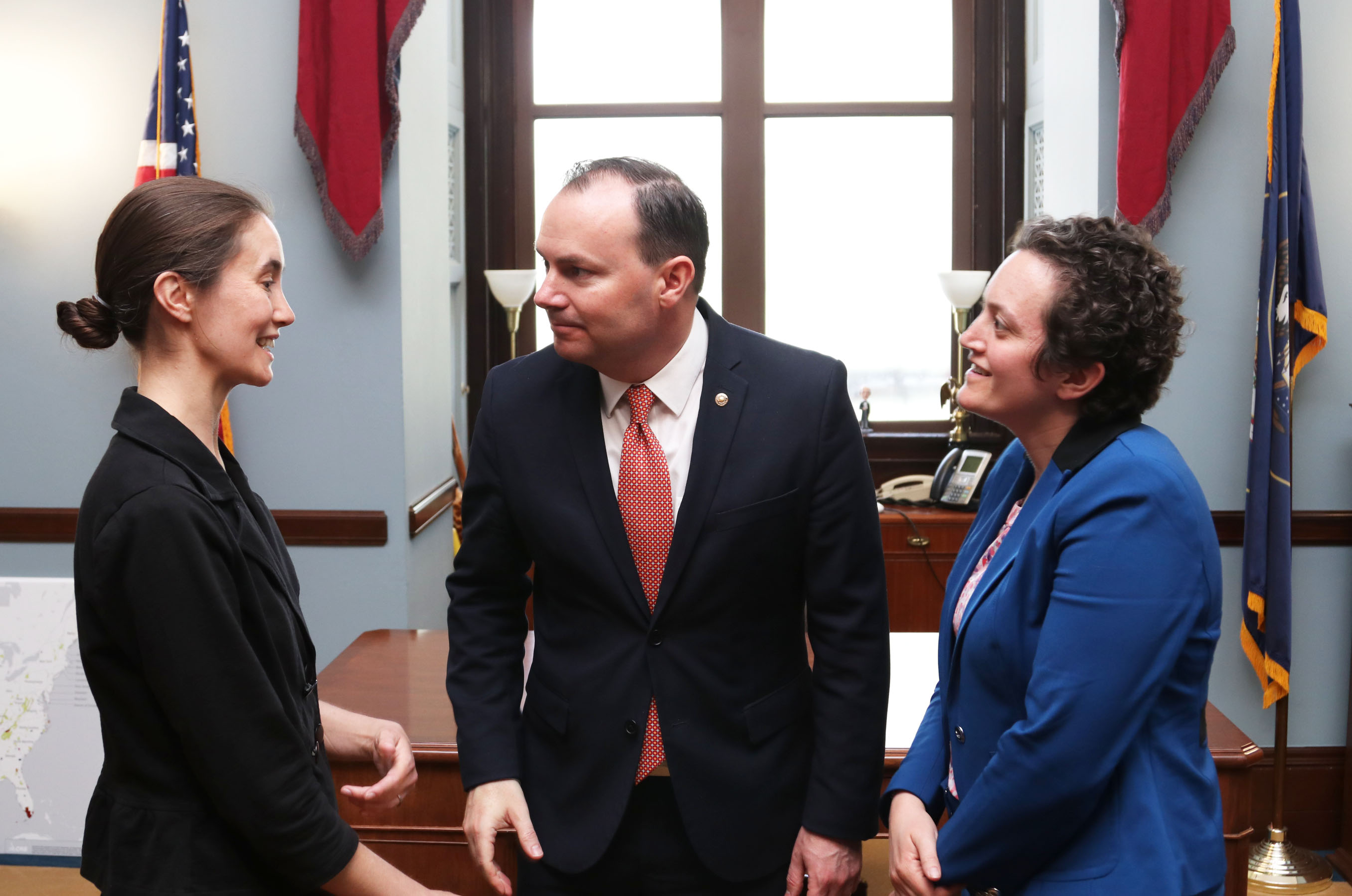It’s All About the Story
I learned many things during my time as a SIAM Science Policy Fellowship recipient, from decoding what felt like hundreds of acronyms to intuitively recognizing a representative or senator in the hall. But the most important thing I learned was how to tell a compelling story about the value of mathematics and science. Fellowship recipients and members of the SIAM Committee on Science Policy like to joke that Congress is most interested in anything that involves “health, wealth, or stealth.” In reality, however, most members of Congress want compelling stories that they can share on the chamber floor when arguing for more funding. As a result, whenever we visited Capitol Hill we began with introductions and stories and closed our time with an “ask.” In the interest of following this same pattern, I will discuss my time as a SIAM Science Policy Fellowship recipient and finish with a request.
When I first heard about the SIAM Science Policy Fellowship Program, I was very interested. Although I never wanted to be a politician, I have always been curious about the political process (and as my career developed, the funding process). I had hoped that the Fellowship Program would offer me an insider’s perspective on these operations, and I was not disappointed. As part of my Fellowship, I received an intensive half-day training on budgets and appropriations, science advocacy, federal science policy, and outreach to other federal agencies. Although I was not surprised to hear that the appropriations process is perpetually behind, I was amazed by individual constituents’ potential impact on the budget.
SIAM retains the services of Lewis-Burke Associates, which helps represent the society (and science policy in general) on Capitol Hill. Lewis-Burke took special care of the Fellowship recipients and ensured that we were prepared and knowledgeable during committee meetings. I was consistently impressed with their connections, understanding of the political process, and insight into exactly who votes for what (and why). As a case in point, a Lewis-Burke specialist once told me exactly how my two senators voted on a particular funding bill (they happened to be against party line), and why they voted that way.

As a Fellowship recipient, I also participated in SIAM’s Committee on Science Policy meetings. At these meetings, officials from different government agencies routinely give presentations, explain their agencies’ funding and research priorities, solicit feedback and suggestions, share their concerns, and request that attendees advocate for specific funding targets. Universally, they were interested in hearing about SIAM members’ reactions to their goals, directions, and concerns. They were also interested in our stories, which allow them to advocate more effectively for math and science.
A highlight of the spring policy meeting is the visit to Capitol Hill. During these gatherings, committee members and Fellowship recipients meet with Congressional members and staffers in small groups, guided by Lewis-Burke representatives. The Hill visits were a high point for me for two reasons. First, I was able to spend a block of time with a few of the more senior committee members and learn about their research and experiences. Second, I had the opportunity to talk about math and science with Capitol Hill staffers, whose eagerness to chat reinforced my belief that representatives in Washington, D.C., do want to hear from constituents.
As part of the Fellowship, recipients complete a project related to science policy. The projects were as varied as the recipients themselves and ranged from organizing special sessions, writing articles for SIAM, and generating white papers for various organizations. I chose to represent SIAM at the 24th Annual Coalition for National Science Funding (CNSF), which was akin to a science fair for congressional staffers and members to learn about the impact of science funding. I presented a poster about a project at Brigham Young University—funded by the National Science Foundation—to improve undergraduate applied mathematics education. The event was another highlight of my time as a Fellowship recipient, as I had the opportunity to talk about SIAM’s mission, applied mathematics education, and my own research with members of Congress and other people who are passionate about science policy in the U.S. Since I was in Washington, D.C., for the CNSF, the Lewis-Burke staffers took me to Capitol Hill where I spent a day advocating for science funding.
Now that my time as a Science Policy Fellowship recipient is over, I am thinking about how I will continue to advocate for science policy in the future. The answer is that I will keep telling stories. I have learned that our senators and representatives care a lot about their constituents’ thoughts, and they cannot know what we think unless we tell them. Communication can be as simple as emailing their offices or as complex as inviting them to an event at your university. An important part of science advocacy is also making people aware of the immense benefits of science funding. This is where stories play a huge role. Stories about math and science successes help the average citizen relate to and understand what we do. And when they understand, they also advocate for science. My ask then is this: Will you find an opportunity to share your science success story this month?
About the Author
Emily J. Evans
Assistant Professor, Brigham Young University
Emily J. Evans is an assistant professor and director of the Applied and Computational Mathematics Emphasis program at Brigham Young University.
Stay Up-to-Date with Email Alerts
Sign up for our monthly newsletter and emails about other topics of your choosing.



